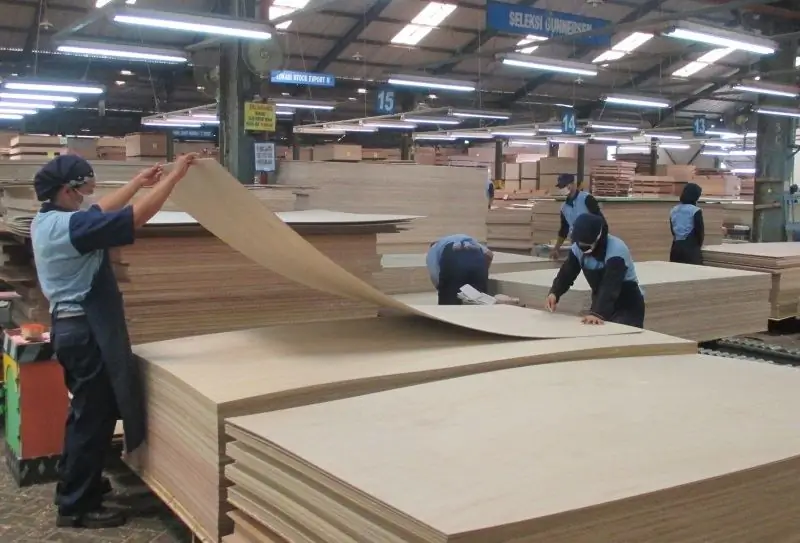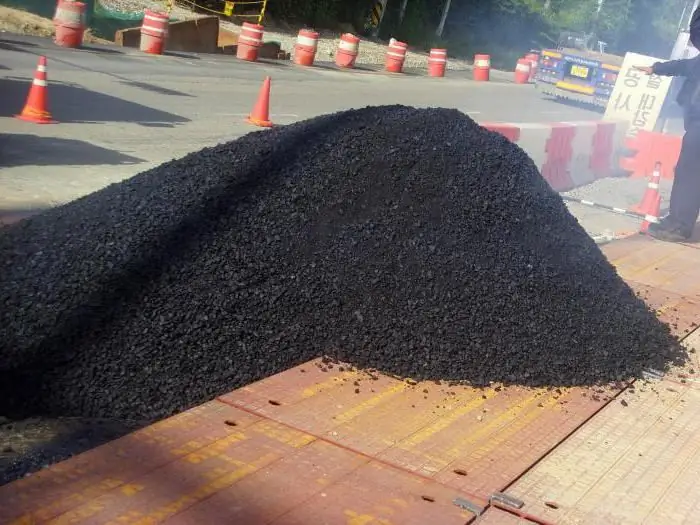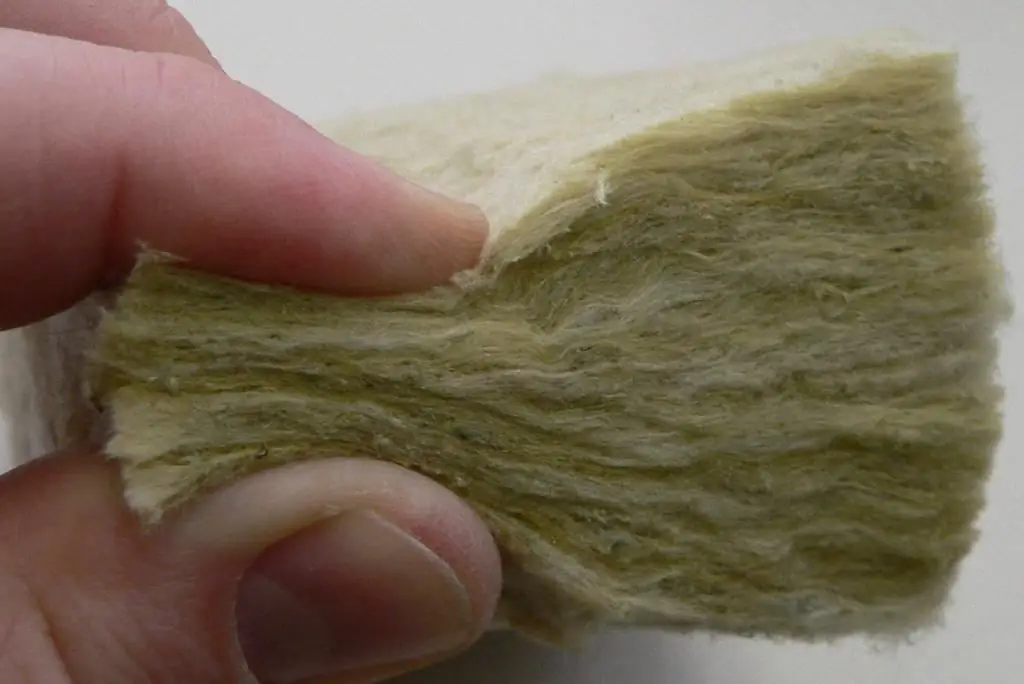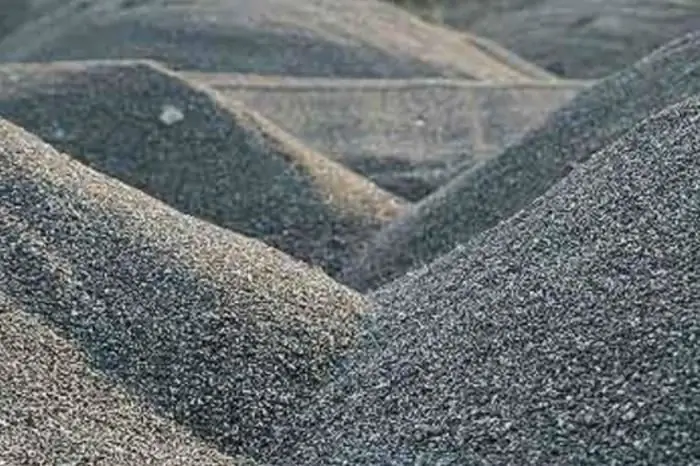2026 Author: Howard Calhoun | [email protected]. Last modified: 2025-01-24 13:10:29
Non-woven materials are a special type of fabrics made without the use of flat weave technologies. To date, there are many types of such products, as well as methods for their manufacture. The scope of the material of this variety is also wide. Most often, non-woven fabric is used in construction and agriculture, as well as in tailoring.
A bit of history
For the first time, non-woven material was made in the second half of the 19th century in the USA. The first canvases of this variety were produced from synthetic fibers fastened together with starch. This material, called pellone, did not receive special distribution in the 19th century. It began to be used quite widely only during the Second World War. The Americans used it to make camouflage products.

In the 70s of the last century, pellon was first used in agriculture as a covering material. At the moment, it is it that is used on 30% of the agricultural areas of the EU countries. In the USSR suchthe material was produced in very small quantities and was used mainly in the clothing industry. It became widespread in our country only in the 90s. Now it is produced by many Russian companies. For example, a very high-quality product of this type is produced by the Podolsk factory of non-woven materials "Ves Mir", founded in 2000.
Density
Non-woven material can be made in different ways, have different thickness, appearance and purpose. However, the main characteristic of such canvases in most cases is strength. The latter, in turn, depends on the surface density of the material. This parameter in groups of different purposes can vary within 10-600 g/m2. So, for example:
- Stitched non-woven fabric usually has a density of 235-490 g/m2.
- Needle-punched fabric has 210 g/m2.
- Density of woven materials - 216-545 g/m2.
- Flizelin has a surface density of 90-110 g/m2.
- For thread stitched fabrics, this figure is 63-310 g/m2.
- Density of non-woven fabric glued - 40-330 g/m2.
Fabrics of this type can be produced mechanically or adhesively. The basis of any such material is a canvas made of natural and synthetic fibers laid in rows. To obtain a fibrous structure, such a webcombing through.

Mechanical production methods
The bonding of the base of the non-woven material using this technology is made using additional threads. In a mechanical way, for example, canvas-stitched materials are made. In this case, the warp fibers are fastened together by stitching them with threads. When using needle-punched technology, the elements forming the canvas are preliminarily entangled with each other. The result is a rather dense fabric. To give greater strength, it is stitched with thick threads. In this case, special tools with notches are used. The needle-punched method of making canvases is currently the most popular. This technology is used by every nonwovens factory.
Thread-piercing materials are made by passing the warp with one or more fiber systems. Such a canvas differs from a canvas-stitched one primarily in appearance. The material of this group is similar to terry cloth.
Mechanically woven fabrics are also on sale today. This variety is produced on a very light basis also by stitching it with a pile thread system. Such canvases can be both smooth and terry.

Production of non-woven fabrics by adhesive method
This technology is used in the manufacture of most varieties of non-woven fabrics. The bonding of fibers in the canvas in this caseproduced by impregnating them with various kinds of adhesive compositions. Most often, synthetic latex is used for processing. Another common technology is hot pressing. In this case, the fibers are glued together with thermoplastics at a very high temperature.
Sometimes the oldest technology is also used for the production of non-woven glued materials - on paper machines. It was with the use of such equipment that the pellet was produced in America. In this case, the binder can be introduced either directly into the mass entering the machine, or already into the finished web.
Using quilted canvases
This non-woven material is distinguished by its large thickness, massiveness and friability. Its main advantage is high heat-shielding properties. Canvas-stitched fabrics are very dense and wear-resistant materials that can shrink significantly. They are most often used as lining in the manufacture of clothing. They are also sometimes used as a basis for the manufacture of artificial leather.

Where needle-punched material is used
Due to the porous structure, this group of canvases also has good heat-shielding properties. In addition, the advantages of such material include resistance to washing and dry cleaning. Needle-punched fabrics are commonly used in the production of carpets and floor coverings. Like canvas stitching, they are also used to make linings for coats, jackets and fur coats. However, in the latter caseneedle-punched non-woven material usually has to be additionally impregnated with adhesive compositions. The fact is that its fibers are rather rigid, and therefore, in a free state, they are able to penetrate the outer fabric of clothing and spoil its appearance.
It is the needle-punched method that also produces the most common non-woven material - dornite. Geotextiles are used in the construction of drainage systems, laying out lawns, building foundations, etc. Also, the needle-punched method is sometimes used in the production of the most popular type of covering material for greenhouses and hotbeds - spunbond. However, more often this type of canvas is still made by the adhesive method (hot pressing).
Using thread and fabric-stitched fabrics
Both of these varieties are also quite in demand in the industry. The main advantage of threaded fabrics is considered to be a variety in appearance. This method can produce both very thin translucent materials and massive furniture. Suits, evening dresses, casual wear, scarves, non-woven napkins are often made using this technology.
The advantages of fabric-stitched materials are stable structure and hygiene. According to such an indicator as wear resistance, they are superior to all other types of nonwoven materials. This fabric is used mainly for sewing bathrobes and beach suits.

Where adhesive sheets are used
Most often, such a non-woven material is made from a mixturecotton and kapron fibers. It is usually used in tailoring. For example, it is inserted into collars, straps and slots to give the latter rigidity. Materials produced on paper machines are most often used for the production of various types of medical dressings.

As you can see, the scope of non-woven fabrics in our time is really very wide. Their excellent performance characteristics make them indispensable for sewing many types of clothing, growing plants, installing drainage systems, etc. The production technologies of such materials are not particularly complex, and therefore their cost is usually low. Basically, this explains the extraordinary popularity of this variety of canvases.
Recommended:
Production of plywood: technology, main stages of the process and areas of application of the material

Plywood is one of the cheapest and most practical building materials. Despite the multi-layer structure, it is easy to install and can be processed at home without special equipment. Standard production of plywood involves the use of wood lamellas, with proper processing of which you can get a finishing material that is resistant to a variety of threats
Density of asph alt concrete: material consumption and composition

The density of asph alt concrete is one of the main characteristics of this material. Asph alt concrete, as it is also called, has the form of a building artificial conglomerate, which is formed as a result of achieving the required density of the mixture laid in the structure
Mineral wool density: classification, advantages and disadvantages, purpose of mineral wool and application

Mineral wool is the most popular type of insulation for an apartment or house. Today it is used by everyone, from builders to the owner of the apartment, who wanted to insulate the room. The simplicity of its installation allows you to immediately insulate the entire house (ceiling, walls, floor). We will study the features and characteristics of the named material further in the article
The density of wood, the characteristics of this material and its features

Why do you need to know the density of a tree, what is the significance of this characteristic? An article about what parameters a tree of a particular breed can have, how the density of a product can be calculated. Under what conditions are characteristics determined?
Density of crushed stone - gravel, granite, limestone and slag. Bulk density of crushed stone: coefficient, GOST and definition

Crushed stone is a free-flowing, inorganic and granular material obtained by artificial crushing. It is divided into primary and secondary. This is an important fact. Primary - the result of processing natural stone: pebbles, boulders, pumice and other materials. Secondary is obtained by crushing construction waste, such as concrete, asph alt, brick. In this text, we will consider in more detail such a property as the density of crushed stone

